A Look at the Challenges and Mechanics of Effective Bilingual Preaching
This post was originally published on GIA’s “Sing, Amen!” blog in October, 2019.
When it comes to delivery of spoken text, whether proclamation of the Word, the homily, or even the Sunday announcements, how these moments are treated shapes the overall experience of prayer and welcome for the community gathered. Because it’s the part of the mass that is ritually unscripted —and typically of some substantial duration—, we’ll talk here about the homily.
The Wholesale Approach
In a bilingual mass, there’s a few schools of thought as to how best to deliver a homily in different languages. One frequently-used approach is for the homilist to deliver their homily first in one language completely, then the other — the thinking being that in order for “each side” to get a “full share” of the preaching, the whole thing needs to be repeated in both idioms. There are merits to this approach, as it guarantees a dutiful, meticulous delivery of content. Yet as a listener, I’m often disenchanted by the tediousness of “doing it twice.” The repetition of an already-elongated component of the liturgy is often a detracting factor from even stellar content. While functional, I’m hesitant to call the approach enjoyable. Granted, I’m a bilingual listener, so to hear the homilist’s entire message again can feel like a bit like deja vu (cue collective eye roll and sigh as one language finishes and the whole homily is queued up again in the other language). Additionally, when unfolded in real time, there’s an unavoidable span of time wherein the single-language listener cannot help but feel excluded and disengaged from the homilist. Couple that with the element of “who gets their turn first” in each period of “linguistic recognition” while the other side waits it out — another reason why I’m not completely satisfied with this method. That being said, for monolingual listeners the “repeat in the other language” model can be admittedly helpful and appreciated.
Taking into account the pastoral wisdom of the moment and setting, along with the homilist’s own linguistic comfort level, if indeed the wholesale repeating of texts in one language then the other is the most apt solution, its effectiveness can have much to do with the delivery. Lest the homily become unduly drawn out and disconnected from large swaths of the assembly, the homilist should take care to be clear, engaging, and expedient in delivering the text.
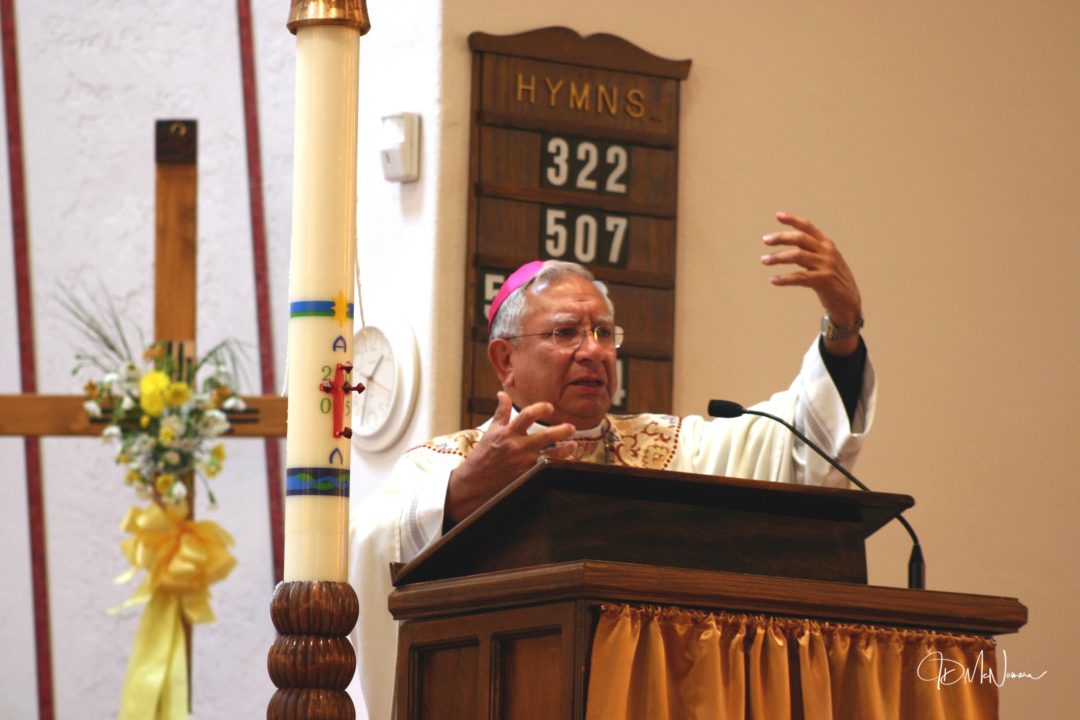
“Story at 11”
Perhaps a useful study can be found in the news industry. Newscasters inherently pride themselves on efficiency and clarity in delivery, with ratings and careers hyper-dependent on such factors. In the news business, delivery is crucial because of the timed nature of each segment of a broadcast, and the speaker is expected to deliver their script within the prescribed time.
I live in the border city of El Paso, Texas, where it’s common —even expected— for local news reporters to be bilingual. As such, many of these journalists are adept at interviewing a person in Spanish and English simultaneously. Their questions might be stated in both languages, for the benefit of the responder and the viewer, but it’s always delivered quickly and succinctly so that there is not disproportionate emphasis on the interviewer. If you’ve ever seen someone like Jorge Ramos from Univision or journalist Mariana Atencio dialoging with an interviewee bilingually, you’ll get the idea of how speed and clarity make a difference. In finding a parallel with a bilingual homily, it’s not a far stretch to understand the importance of these very factors.
This brings to mind, most curiously, the bonus material on the DVD for Mel Brook’s comedic movie, “Young Frankenstein” (weird connection, I know!). One of the bonus features is a segment where the main actor Gene Wilder and his co-stars are interviewed —in English and Spanish (!)— by a Mexican reporter who is quite skilled at bilingual delivery. While I cannot figure out the Spanish-language connection to the 1977 film’s promo agenda, it impressed me that this interviewer was so adept at a smooth bilingual delivery that the actors could respond naturally and remain unphased by what could have become a linguistic (and mental) barrier. (Given the comedic nature of the film, they even have a bit of fun with the language angle.)
All this to say, when delivering a “repeated” text, if the homilist is efficient, engaged and animated, even the non-understanding listener can at least feel “drawn in” to the spirit of the message until their own language is heard. And for all my apparent critique of wholesale repetition, there is something to be said, curiously enough, for repetition in musical forms; after all, litanies are built upon this very premise. Repetition can pave the way for “steeping” our souls in a particular message (think, in particular, of the mantras and ostinato refrains employed in the Taizé tradition and just how powerful a means to prayer they are). So, in spite of petulance on the part of this listener for having to endure a double dose of preaching, I readily acknowledge what a privilege it can be to hear “twice” God’s Word broken open. It’s not unlike wanting to see a good movie again while it’s still in the theater!
Intertwined Approach
Now a different approach to bilingual preaching might be for the homilist to weave together shorter portions or narratives that keep the listener engaged, even in periods of non-comprehension, through more frequent linguistic “installments.” These portions don’t necessarily have to be verbatim repetitions of each other, but rather threads that keep the momentum moving. For example, in a bilingual English-Spanish homily, the various fragments or portions in English amount to a thread of its own, while what is said in Spanish also constitutes its own mini-thread; and together, the aggregate of both “threads” comprise a cohesive homily. Formulaically, this interwoven technique might look like this: A + B = C, whereby A and B are each stand-alone narratives in opposing languages, and the sum C is the full result of the two intertwined. With either A or B both yielding a cohesive and satisfying result, I note the wording used by the Church in regards to the “total presence of the Lord Jesus Christ whether … under one form or … both kinds” (in reference, of course, to reception of holy communion under both species) as an interesting analogy here in the breaking open of his holy Word via different languages.
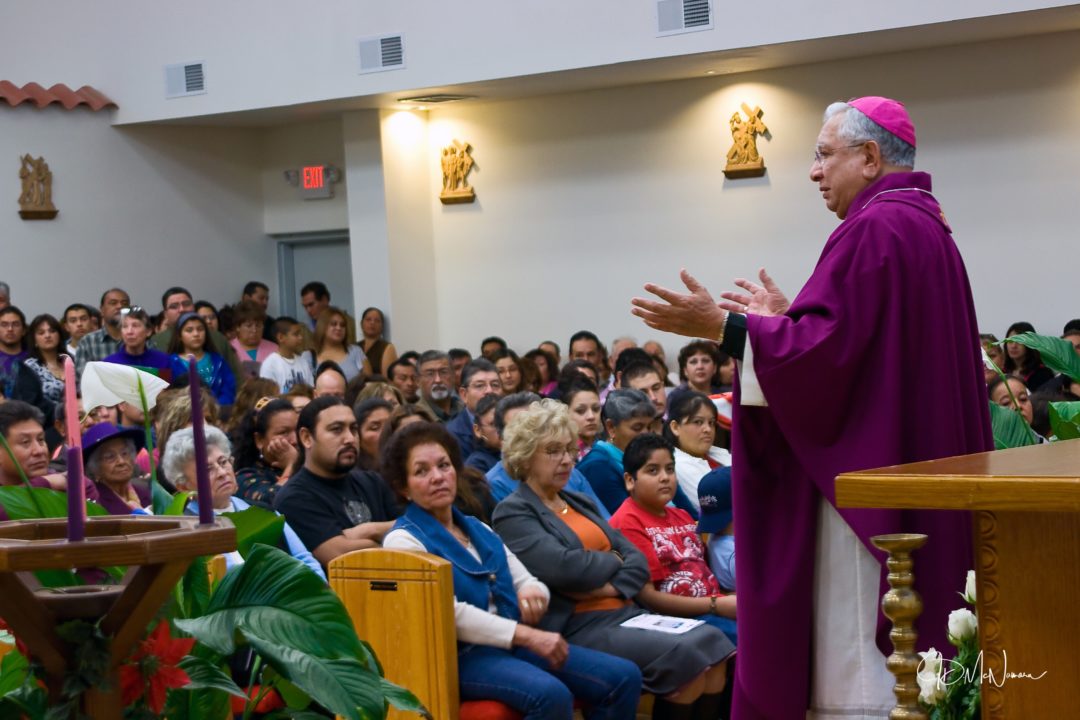
This “toggling” between languages is indeed a developed skill, because it involves language facility and story-telling creativity. Persons who are naturally bilingual can often hone this craft, taking this method of bilingual homiletics to great heights. I think specifically of Bishop Emeritus Ricardo Ramirez of Las Cruces, who in each of his homilies, takes the listener on an enthralling spiritual journey as his narratives unfold in either language. The languages are mixed so naturally and seamlessly that the listener can forget that they don’t understand all of what’s being said, but is fed enough of a preached meal that they feel satisfied by the end, as if having indulged in a banquet.
In Conclusion
There are other approaches beyond those explored here, including more adventuresome ones involving audio and visual technology, simultaneous interpretation, projected texts, or printed medium like prepared bulletins or worship aids. When formulated and executed with the listener in mind, these all have potential to effectively convey the homilist’s content across multiple languages.
It’s important to stress that as a member of the laity, I am not a homilist; these observations are purely from the pew perspective and admittedly and comfortably removed from the stresses and pressures homilists undoubtedly face each time they prepare to preach, in one language let alone two. Nevertheless, I do find myself in a fair share of situations where I must speak to an audience bilingually. I know well the immense challenges posed by such scenarios —from timing to effective conveyance of content—, but also recognize and cherish the incredible gift of a “Pentecost moment” to address the gathered Body of Christ. Those of us entrusted with pastoral speaking are in a unique position to transform, regardless of language, through each encounter.
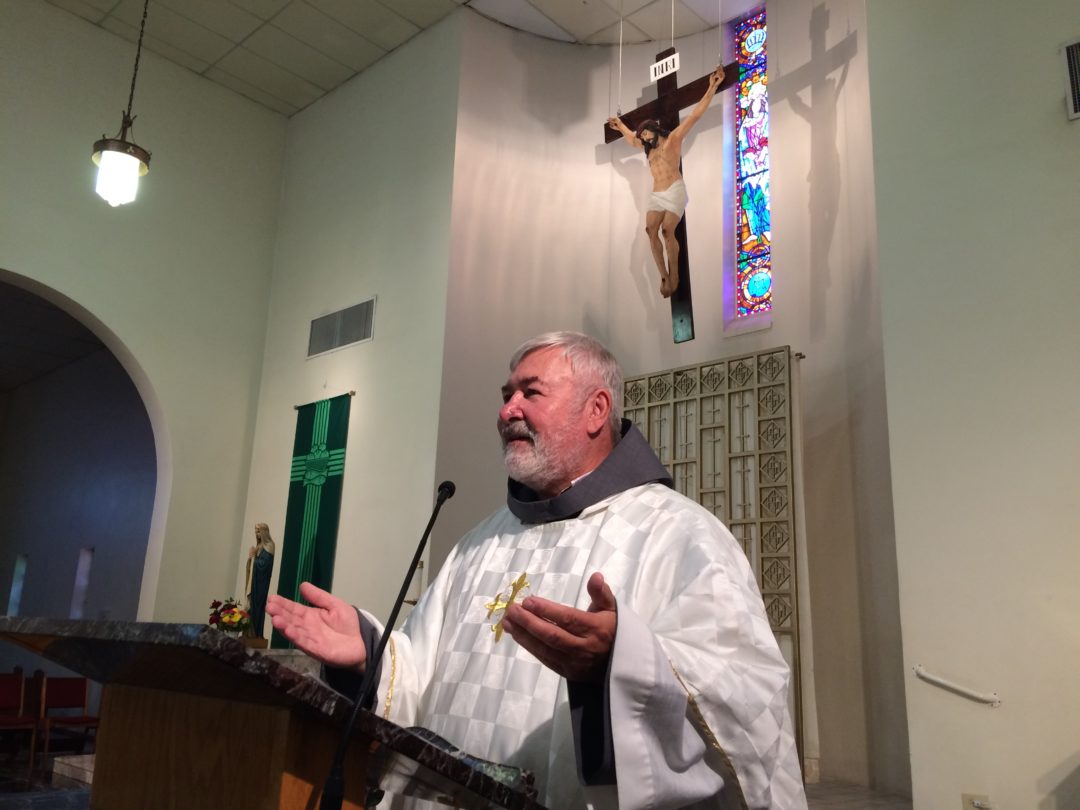
Secondly, to my ordained friends reading this, I don’t mean to oversimplify or otherwise presume my suggestions constitute some kind of instant formula for cultural success or magical solution to the difficulties of bilingual preaching. I commend your commitment to the ever-constant call to break open the Word of God for us, the faithful, in relevant and meaningful ways while simultaneously addressing multiple cultures. As your listener, I thank you and continue to learn from your collective efforts in this new linguistic reality.
We’ll explore other moments of the mass and their texts in future posts. For now I hope you’ve enjoyed giving some thought to (and discovered a newfound appreciation for) the mechanics behind bilingual preaching, whether from behind the ambo or in the pew.
¡Que cantemos amén! Let the church sing Amen!
Cover image: Fr. Michael Lewis of the Diocese of El Paso preaches at Mundelein Seminary. Photo courtesy of Mundelein Seminary, usml.edu

Peter Kolar
GIA Publications
Peter is the Editor for Spanish and Bilingual Resources at GIA Publications. He is an accomplished composer and pianist known for his creative use of both classical and Latin-American musical forms. Peter holds a masters degree in music composition from Northwestern University and sits on the board of directors for the Southwest Liturgical Conference. He resides in El Paso, TX, where he is the Director of the Diocesan Choir.

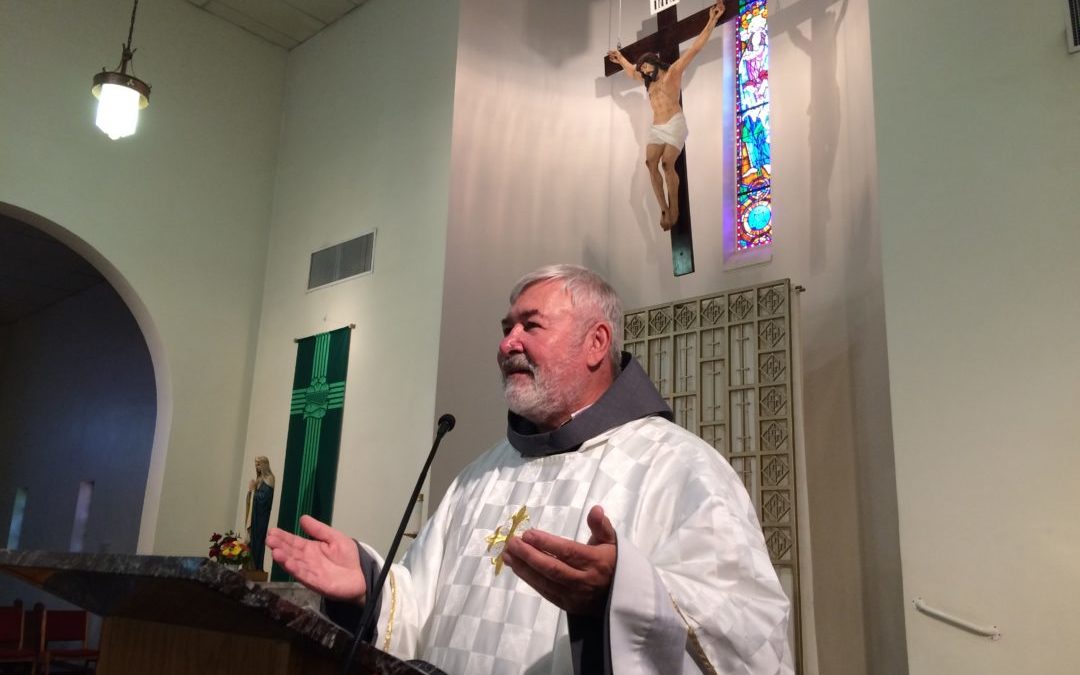
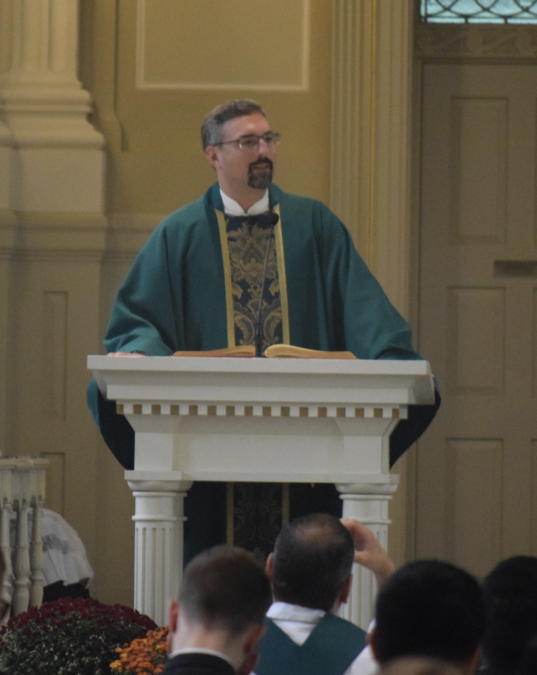
Recent Comments